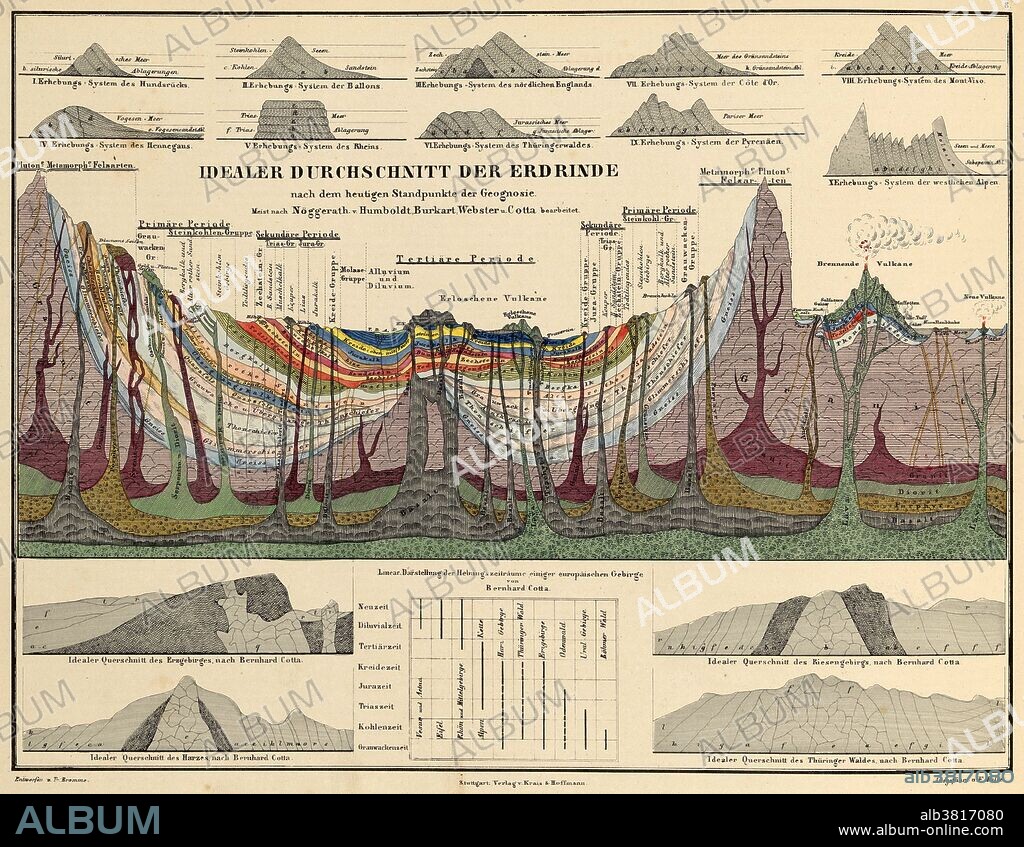alb3817080
Composition of the Earth's Crust, Humboldt, 1845

|
Ajouter à une autre Lightbox |
|
Ajouter à une autre Lightbox |



Avez-vous déjà un compte? S'identifier
Vous n'avez pas de compte ? S'inscrire
Acheter cette image.
Sélectionnez l'usage:

Titre:
Composition of the Earth's Crust, Humboldt, 1845
Légende:
Voir la traduction automatique
A plate from the atlas of Alexander von Humboldt's Kosmos, illustrating the composition of the Earth's crust via color-coding. Between 1799 and 1804, Prussian geographer, naturalist and explorer Alexander von Humboldt (1769-1859) travelled extensively in Latin America, exploring and describing it for the first time in a manner generally considered to be a modern scientific point of view. His quantitative work on botanical geography laid the foundation for the field of biogeography. Humboldt's description of the journey was written up and published in an enormous set of volumes over 21 years. He was one of the first to propose that the lands bordering the Atlantic Ocean were once joined (South America and Africa in particular). Later, his five-volume work, Kosmos (1845), attempted to unify the various branches of scientific knowledge. He thought an approach to science was needed that could account for the harmony of nature among the diversity of the physical world.
Crédit:
Album / Science Source / Wellcome Images
Autorisations:
Modèle: Non - Propriété: Non
Questions sur les droits?
Questions sur les droits?
Taille de l'image:
5260 x 4077 px | 61.4 MB
Taille d'impression:
44.5 x 34.5 cm | 17.5 x 13.6 in (300 dpi)
Mots clés:
 Pinterest
Pinterest Twitter
Twitter Facebook
Facebook Copier le lien
Copier le lien Email
Email
